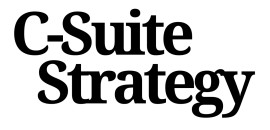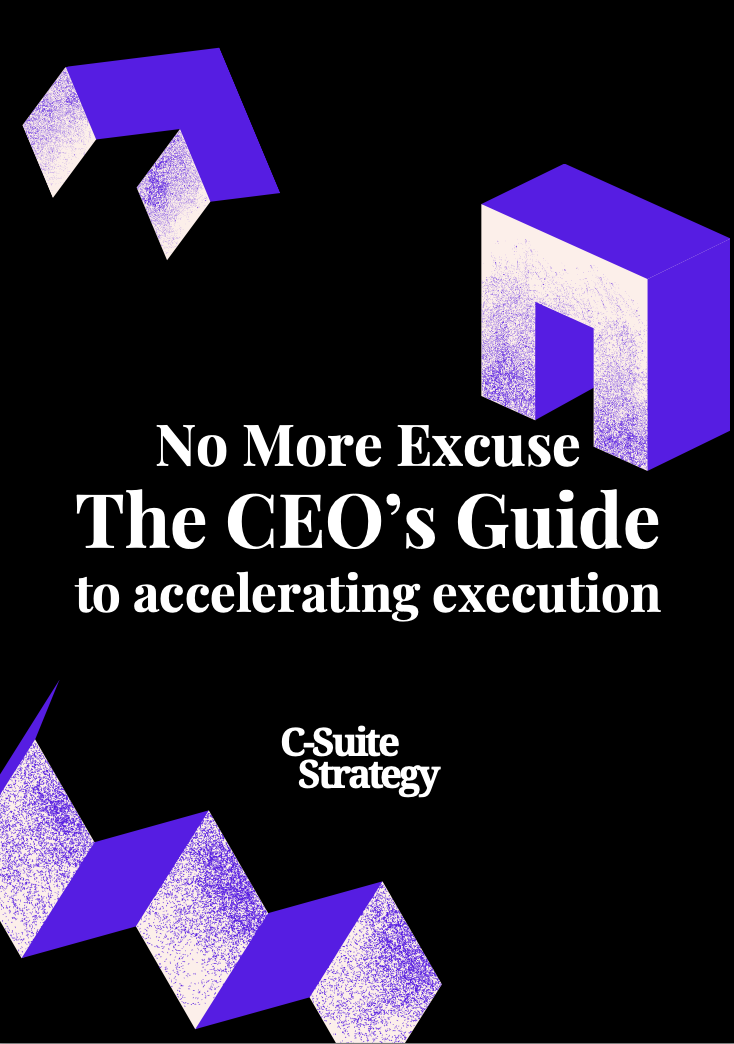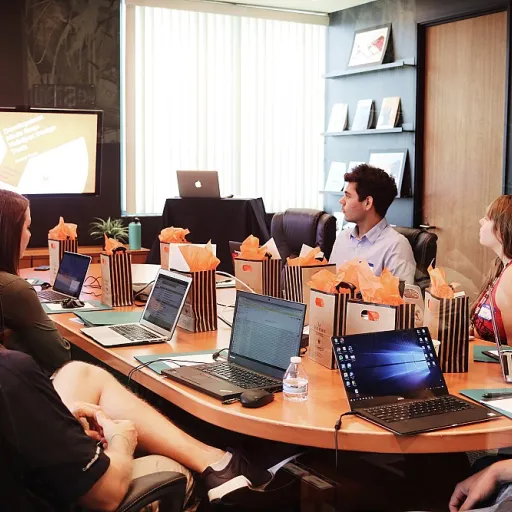
Understanding the Role of Alignment Workshops
Maximizing the Impact of Alignment Workshops in Modern Business Environments
In today's rapidly evolving business landscape, alignment workshops have emerged as pivotal tools for ensuring that teams are aligned with the broader strategic objectives. These workshops serve as structured environments where leaders and team members come together to sharpen their focus, synchronize their activities, and prioritize initiatives.
The essence of a successful alignment workshop lies in its ability to bridge gaps between strategic vision and the execution phases. By facilitating open communication among participants, these workshops enable each team member to understand their role and contribution toward the collective business goal. As a result, teams can create well-defined pathways that help enhance performance and strategic cohesion.
Utilizing activities such as brainstorming sessions with sticky notes, strategic discussions on content initiatives, and priority alignment processes, workshops offer a collaborative platform to dissect the complexities of business strategy. Facilitators play a crucial role in steering the session toward tangible outcomes, ensuring that the activities align with the organization's strategic priorities. These activities not only help participants focus on immediate objectives but also build momentum for long-term strategic alignment.
By understanding the dynamics of effective workshops, organizations can better allocate time and resources, allowing for the development of effective systems and a clearer trajectory towards achieving their overarching goals. For a deeper insight into how to achieve alignment and maximize these sessions' potential impact, explore our resource on strategic leadership.
Key Elements of a Successful Alignment Workshop
Essential Components for Workshop Success
Establishing a successful alignment workshop requires meticulous attention to the components that can seamlessly bridge the gap between vision and action. Effective planning, clear communication, and a focus on shared objectives are vital. 1. Defining the Workshop's Core Objectives Prior to the commencement of any strategic alignment workshop, it’s crucial to clearly define the workshop's goals. The objectives should align with the overarching strategy of the business and be effectively communicated to all participants. This clarity aids in focusing the session, driving priority actions, and ensuring that teams and individuals are aligned with the organization’s goals. 2. Engaging the Right Participants Selecting the appropriate team members for the workshop is a strategic move that can significantly influence its potential impact. Including representatives from different departments ensures diverse perspectives and enriches the discussion. Aligning a well-balanced team helps leverage collective insights and integrates varying viewpoints and expertise into the strategic alignment. 3. Developing a Comprehensive Workshop Template Structuring the workshop using a well-thought-out template is vital for maintaining the session's focus. The template should outline key sessions and activities designed to promote team alignment and strategic discourse. Including interactive elements like brainstorming using sticky notes can build momentum and engage participants actively. 4. Ensuring Active Participation and Collaboration To maximize the effectiveness of alignment workshops, encourage active participation from everyone involved. Creating an environment where team members feel comfortable sharing their ideas and concerns can significantly enhance collaboration. This collaborative spirit boosts the alignment of individual goals with the overall business strategy, contributing to a more cohesive working dynamic. 5. Facilitating Open and Constructive Dialogue Leadership plays a pivotal role in facilitating a workshop that promotes open and constructive dialogue. Leaders should exhibit adeptness in steering conversations toward strategic objectives while addressing any arising conflicts. By doing so, leadership can help team members maintain a balanced focus on both immediate and long-term goals. In embarking on these activities, organizations can pave the way for more effective strategic alignment that resonates beyond the workshop, thus boosting business performance strategically. Learn more about techniques for strategic improvement by exploring the comprehensive insights provided here.Overcoming Common Challenges in Alignment Workshops
Steering the Ship in Turbulent Waters: Conquering Hurdles in Alignment Workshops
When circles don’t seem to square, alignment workshops can run into a myriad of challenges. These obstacles can obstruct the path toward aligned goals, leaving team leaders and members feeling like they're adrift without a compass. Let’s tackle some common barriers head-on, with practical strategies to navigate these rough waters. Firstly, time constraints can play havoc with alignment sessions. Teams often juggle multiple priorities, with little breathing space to delve deep into strategic alignment. To counteract this, it's imperative to set clear expectations for each session and establish a workshop template that optimizes available time. Ensure each team member is aware that their participation is valued. Secondly, disparate goals can lead to a lack of focus during any alignment activity. Clarity here is key. Prior to the workshop, work with leadership to crystallize strategic goals. This will help participants align with a unified objective and maximize the potential impact of the sessions. Fragmented communication systems are another stumbling block. When information flows are bottlenecked, they hinder team alignment. Encourage open dialogue, and employ supportive activities, like using sticky notes to visualize collective thoughts and goals. This not only helps participants but also strengthens the alignment team’s collective understanding. Lastly, the challenge of sustaining momentum post-session cannot be ignored. It’s crucial to create a follow-up system that holds team members accountable and maintains strategic momentum. Integrating digital tools or platforms to track progress can prove beneficial in bridging this gap, guiding the transition from strategy to execution. For more insights on steering strategic cohesion, explore a deeper dive into transformation strategy on this helpful content resource. Facing challenges with a structured approach, these sessions are transformed from tedious chores into powerful drivers of business harmony. A well-aligned team, empowered to take initiative, can steer the company vessel through the unpredictable currents of change.Aligning Vision and Execution
Creating Synergy between Organizational Vision and Execution
Alignment workshops serve as a pivotal bridge connecting the company's overarching vision with the practical execution of this vision. Despite setting clear goals during strategic planning sessions, companies often face a gap between their strategic objectives and their execution on the ground. This disconnect can lead to fragmented business operations, ultimately undermining team effectiveness and overall business progress. To build a cohesive strategic alignment, it is essential to involve all team members in the alignment workshop. This participation helps to ensure that each member understands the business goals and the vital role they play in achieving them. The activities employed during the workshop should encourage interaction, enabling participants to voice their insights and aligning their personal goals with the company’s larger objectives. A well-designed alignment workshop template often includes interactive techniques such as the use of sticky notes for brainstorming activities. These activities not only encourage collaboration but also aid in visualizing priorities and potential impacts. By engaging in these activities, workshop participants can gain clarity on what priorities will help drive the strategy forward. Time management plays a crucial role in maintaining focus during these sessions. Evaluating and setting priorities ensures that the workshop does not deviate from its primary goal of aligning vision with execution. By focusing on what truly matters and identifying initiatives through collaborative content strategy discussions, teams can refine their goals and action plans. Leadership plays an integral role in creating synergy between vision and execution. Effective leaders facilitate team alignment by ensuring that the company's vision is clearly communicated and understood by all participants. Simultaneously, these leaders nurture an environment where team members feel encouraged to contribute to strategy alignment actively. Such leadership will help to build momentum and drive sustained success beyond the workshop. Furthermore, systems need to be put in place to track and measure the alignment between strategy and execution continually. These systems will help teams assess their performance regularly, adapt their strategies when necessary, and maintain direction toward achieving aligned goals. In turn, these measures will support long-term alignment and organizational success as teams better understand how their daily activities contribute to larger business objectives.Measuring the Impact of Alignment Workshops
Evaluating Workshop Success Metrics
To truly capitalize on the benefits of alignment workshops, it is pivotal to establish a robust system for measuring their impact on both team alignment and overall strategy execution. The effectiveness of these sessions can be assessed through a mix of qualitative and quantitative approaches, ensuring both leadership and team members can visualize the tangible outcomes.
Begin by setting clear, aligned goals before the workshop that inform what success looks like. This will help team members to focus their activities during the session and provide a benchmark against which progress can be measured. Consider implementing the following strategies:
- Feedback Mechanisms: Utilize surveys and feedback forms immediately following the workshop to capture real-time input from participants. This qualitative data will give insights into participant perceptions, helping leadership pinpoint areas for improvement.
- Progress Tracking: Develop a system for monitoring how well teams adhere to the alignment goals over time. This could be through periodic check-ins or using existing business systems to track key performance indicators. Keeping track of the strategy alignment within each team will help maintain momentum.
- Content Initiative Outcomes: Relate the strategic objectives discussed during workshops to broader business outcomes. Evaluate whether content strategy initiatives, discussed during the workshop, translate into measurable business improvements.
- Activity Prioritization: Assess whether the prioritized activities in the workshop have taken precedence in everyday business operations. This impact measurement will reflect if the alignment workshop effectively forged a link between vision and execution.
A well-designed workshop doesn’t just end with the session itself but should be embedded into ongoing business practices. Ultimately, the workshop's impact will be seen in the enhanced cohesion and synergy among team members as they work toward common business goals. The results will act as a guide, helping move the team alignment initiatives forward and ensuring effective utilization of time and resources.














